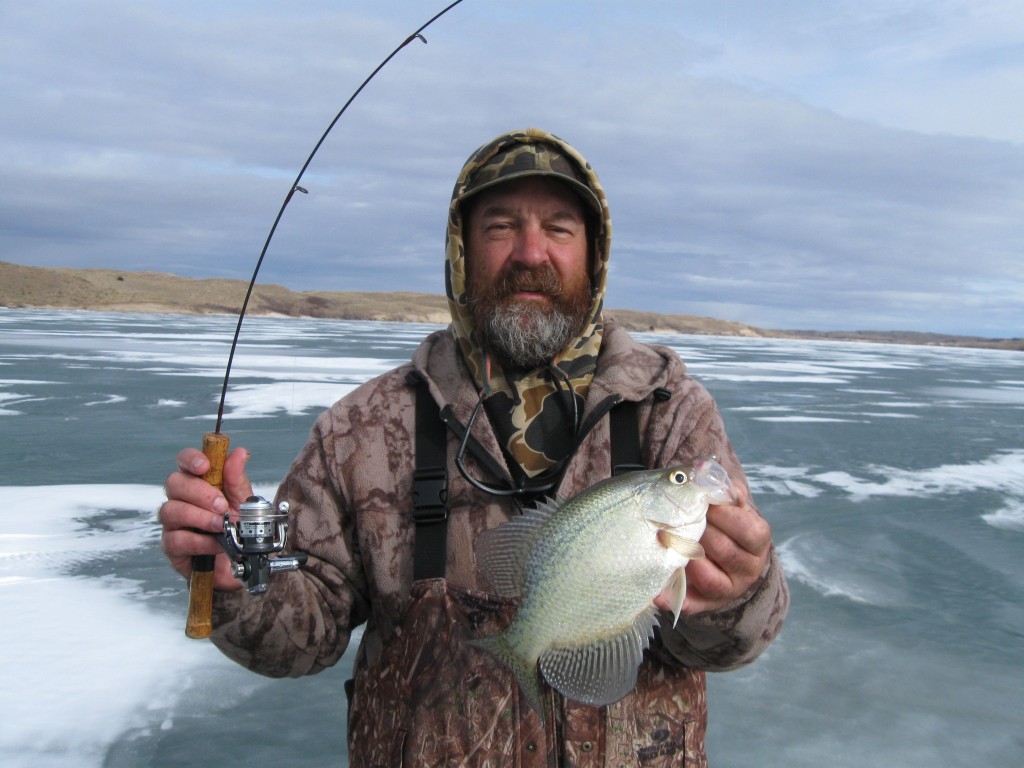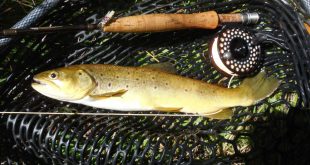I hope many of you have looked at the title of this blog post and wondered, “What in the world is “barotrauma?””. Barotrauma is the pointy-headed fish biologist term for what happens to some species of fish when they are quickly raised from relatively deep water to the surface. Most species of our freshwater fish have swim bladders–internal “bags” of gas that the fish use to regulate buoyancy. Fish living at depths of 20-30 feet or more only have a small amount of gas in their swim bladder, but if those fish are brought relatively quickly to the surface, like when they are hooked and reeled up, physics dictates that little bit of gas expands. What results when those fish get to the surface is they have an expanded, distended gas bladder, balloon, which prevents them from getting back down to the depth from which they were caught.
There are other physiological problems that happen in fish when brought up from the depths, bulging eyes, gas bubbles in the blood and membranes, and “barotrauma” refers to all of that. Human divers call the phenomenon “the bends”. If you are interested in a more detailed description and what it all means, may I suggest one of my old blog posts, Deep Water Mortality. There is more detail in that blog post and an excellent video from marine fisheries. It is much more common for anglers to bring fish from great depths to the surface in the ocean.
There are some species of fish like trout and catfish that can “belch” gases from their swim bladders as they are raised and their swim bladders expand. Anglers can actually see the bubbles come to the surface while playing those fish. Unfortunately, most of the sport fish preferred and pursued by freshwater anglers CANNOT regulate gas in their swim bladders in the relatively short time they are reeled to the surface. It takes hours of biological processes for the regulation of gases in the gas bladder for most species of fish that we might catch from deep water. Those fish often succumb before they are able to get back down to the depth they came from.
With the need to release fish in some situations, because it is dictated by regulations, and more often because anglers like to practice catch & release, what can be done to save fish caught from deep water? Admittedly, in most Nebraska waters, most of the time, this is not a problem–most of the time anglers are NOT catching fish from water deep enough that the fish suffer barotrauma. However, there are times and places when fish caught from Nebraska waters will suffer barotrauma. Catching fish through the ice is one of those times; on reservoirs like Merritt and Elwood, fish can often be caught through the ice from 30, 40 feet of water and even more.
One option when fishing those depths is to pull off those fish and go looking for catchable fish in shallower water. However, if the fish are biting in 40 feet of water, who wants to do that?
Another option would be to selectively choose to harvest a few of those fish, what can be eaten in a meal, and then go looking for fish in shallower water. Again, if the fish are biting, who wants to do that? We all want to catch fish.
Fortunately, there are some other options, there are some innovative and smart anglers out there figuring this out. Follow this link to an excellent article on the subject, an article by another pointy-headed fish biologist, Gord Pyzer, How to Prevent Barotrauma in Fish. While you are at it, watch the video too! Gord knows what he is talking about!
In freshwater, in Nebraska, compensating for barotrauma can be accomplished by adapting saltwater methods and gear to the waters we fish. If you took the time to read the article and watch the video, you saw one of those products mentioned, Roklees. Yes, this will take some effort on part of the angler, but it is doable, in fact it is easy, and I am betting there are at least a few anglers who will do it. Cabela’s even has the Roklees product available now, Roklees in Cabela’s! If you looked through my previous blog post on deep water mortality, I mentioned some other products or even DYI options.
Again, for most anglers on most Nebraska waters, don’t worry about it–you will not be catching fish deep enough that they will experience barotrauma. On the other hand, there are some of you reading my post now and you know what I am talking about. Conservation-minded anglers can deal with it, fish caught from deep water can be successfully released too. Try it!
 Nebraskaland Magazine
Nebraskaland Magazine




